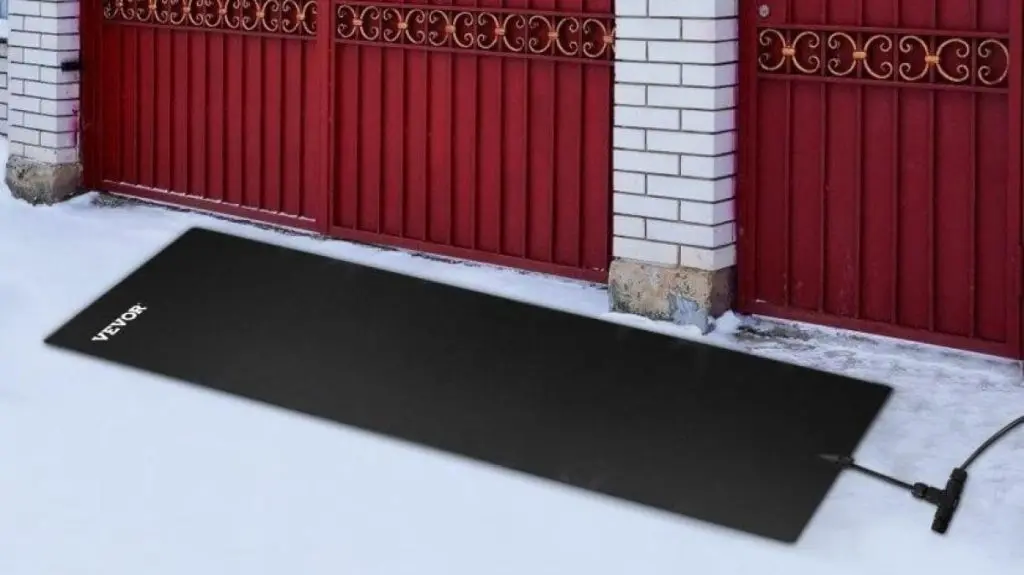Your dream of a perfect front lawn or backyard garden can be ruined overnight by stubborn weeds; this is why it’s necessary to know how to use a weed sprayer, they guarantee effective weed control.
Without a doubt, weed sprayers save you the stress of manually picking out weeds. With them, you can get a lot of work done in a short time, not to mention they offer precise spraying, so the chemicals don’t mess up your precious non-weed plants.
Owning a quality weed sprayer like a VEVOR backpack sprayer is crucial to keeping your garden weed-free. A VEVOR backpack sprayer is your perfect companion for eliminating unwanted plants effectively, efficiently, and timely.
This guide is your gateway to exploring how to use a sprayer for weeds and how to get the best out of your VEVOR backpack sprayer.
Table of contents
Understanding Your Weed Sprayer
A weed sprayer is not a complicated tool, learning how to use one wouldn’t require you to get an Engineering degree. However, we advise you to get familiar with its components; this will help you learn how to distinguish authentic from counterfeit and also help you figure your way around them faster.
Components of a Weed Sprayer
These are the basic components every good weed sprayer should have;
A Tank
The weed sprayer tank houses the liquid solution to spray the unwanted plants. The size of these tanks is determined by their specific use/applications and can range from 5 liters to 20 liters.
The Pump
An equally vital part of a weed sprayer is the pump. The pump pressurizes the liquid in the tank to create the needed force to launch the mixture through the nozzle. There are different types of pumps;
- Piston pumps
This comes with a cylinder housing. When pumping, a piston moves in an up-down motion to create pressure up to 90 psi. It is great for use with herbicides, pesticides, and other low-viscosity liquids.
- Centrifugal pumps
This pump works by causing the liquid to flow in a circular pattern, helping to transport it for delivery through the spray nozzle.
- Diaphragm pumps.
This pump can reach a pressure level of 60 psi, and it is a flat diaphragm enclosed in a housing secured by a screw and flexes up and down to deliver pressure when pumping.
The Wand
The wand job is simply to ensure that your nozzle finds its way into the most challenging terrains during use without necessarily exerting physical strength. Think of it as an extension cord for your backpack sprayer.
Nozzle
You can’t know how to use a sprayer without learning about the nozzle. Nozzles distribute the liquid on the weed in the form of droplets, and they have different applications, including a cone, flat fan, and adjustable nozzle.
Straps
Straps help you secure the weed sprayer to your back for a smooth dispensation of the solution on the weed. Every good, quality backpack sprayer must come with straps unless they’re portable, hand-held sprayers.
Different Types of Weed Sprayers
Get familiar with how to use weed sprayer options available for you to pick from depending on your requirements.
Backpack Sprayers
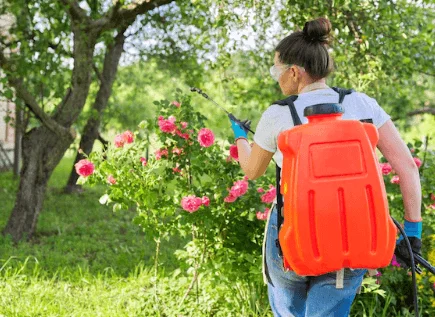
Like their name, backpack sprayers go on your back. They contain a tank, a pump, and a wand with a spray nozzle to supply liquid fertilizers, pesticides, or weed killers to lawns, plants, and gardens. The VEVOR backpack sprayer is a classic example.
Handheld Sprayers
These are portable weed sprayers. They boast ease of use and offer you control and efficiency by directly handling the complex tasks of applying herbicides and pesticides over weeds. Handheld sprayers are also space-saving, so you never have to worry about where to store them when you’re done using them.
Wheeled Sprayers
These types of weed sprayers are either attached to tractors or placed on vehicles to help with the spread of herbicides over large areas quickly. They are convenient to use and are known to increase productivity. If you do have a large farm or garden space, wheeled sprayers are perfect for addressing those weeds.
How to Prepare Your Weed Sprayer for Use
You must follow specific steps to the letter when figuring out how to use a sprayer for weeds, especially when mixing the herbicide solution together, to ensure you get the expected result and don’t waste resources.
Checking and Assembling Your Sprayer
Start by examining and organizing all parts of your backpack weed sprayer and ensure every component is in its designated spot. For this, make your sprayer’s manual your best companion and strictly adhere to the instructions on how to use the sprayer.
N.B: Failure to put all parts of your sprayer in place will lead to spillage or complications during use; no one wants this.
Mixing the Herbicide Solution
Prepare all your chemicals in the right proportion as indicated in the guide, and check if you need to add any water to the mix (some herbicides come in powder or liquid form).
Wear safety gear when carrying out this process. If herbicides are strong enough to kill plants, imagine what they can do to your health if you inhale or ingest them.
Be meticulous enough to use the appropriate herbicide for the problem at hand. When your mixture is ready, open your sprayer’s tank and fill it slowly to avoid a pressure surge that could cause spillage. Once the mixture is in and at the right level, close your tank and put the lid in place, securing it tightly.
How to Use Weed Sprayer Correctly
Now that you have a backpack weed sprayer, how do you use it to ensure optimum performance? Don’t sweat it; we got you!
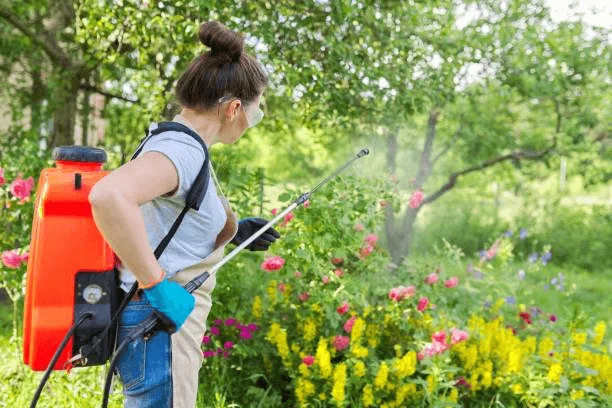
Safety Precautions and Gear
The first step to ensuring safety on how to use a sprayer for weeds is to get a durable and effective professional-grade sprayer like VEVOR. Then, proceed to get a safety gear kit; this will include gloves, masks, safety goggles, overalls, and boots to protect your skin and sensitive body parts from contact with chemicals.
Like the image above, if your hair is long, pack it hair behind your ears, or better yet, wear a polythene bonnet for extra safety.
Use a table or a pick-up bed to stage your sprayer. Filling your backpack sprayer on an elevated surface allows you to carry it easily on your back instead of lifting it from the ground up.
Techniques for Effective Spraying
The real work on how to use a weed sprayer starts after you secure the backpack sprayer on your back. Once secured, proceed to prime the sprayer by building up pressure in the backpack sprayer.
Start by pumping the sprayer in an upward/downward motion every five seconds to introduce pressure in the pump sprayer tank. By doing this, you ensure free flow when you begin full-force spraying.
Now that you’re ready to apply your chemical on the weed, pull the trigger to release it and cover all the areas you want to address. When applying your chemical mixture, maintain an upright position with your arm in front of your body while you walk the affected area.
You can change the nozzle if you wish to increase or reduce the tempo of the application rate instead of slowing down the pressure or wasting more time by reducing your walking speed.
Common Mistakes to Avoid
How to use a sprayer for weeds without error?
Never overlap your spraying—using more liquid than required does not mean the herbicide will have a stronger effect. Stay within the provisions of the label, and always plan the ratio of the solution you’re spraying before mixing it in the tank.
Do not use your backpack sprayer in the rain or in the wind, and don’t leave chemical mixtures in it for an extended period of time, as this might lead to corrosion and damage to sensitive parts.
How to Maintain and Clean Your Weed Sprayer
Maintaining and cleaning your weed sprayer is the only way to get the most out of it, ensuring it stays functional for a long time. A perfectly cleaned weed sprayer does the job quickly and leaves behind zero mess for you to deal with.
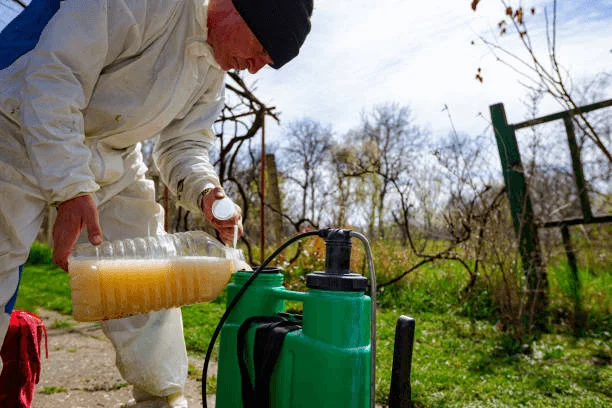
Regular Maintenance Tips
- Clean your sprayer tank with clean water regularly and, most importantly, after use to prevent germs from getting into your storage room or spreading around the house, especially when the sprayer tank is used for disinfecting purposes.
You can do this by removing the nozzles and filters to check for debris and flushing them with clean water.
- Check for wear and tear on your lids, filters, pumps, wands, and sprays, which could cause malfunctions and uncontrolled spillage. Focus on areas where hoses can be kinked or missing gaskets and replace them accordingly
- Also, always monitor the pressure on your backpack weed sprayer to avoid overpressurizing it, which can cause it to burst. With multifunctional tools like sprayers, it’s best to forestall any case of damage by prioritizing preventative maintenance.
- Lubricate moving parts during monthly maintenance tasks to prevent damage. Consult the manual before purchasing any lubricant for compatibility.
Troubleshooting Common Issues
- Check for leaks, especially if you’ve been using them for a while. The tank is usually made of plastic. Many have become weak and thus prone to leakages that might lead to chemicals spilling on unwanted areas of your garden.
- Examine your sprayer nozzle for clogs that may hinder proper liquid dispensation and pressure problems that may mess up the reach and precision of your sprayer. You can also hand-tighten loose screws and connections, but be careful not to over-tighten, so you don’t damage things some more.
Expert Tips for Using a Weed Sprayer
With the right techniques and expert-vetted tips we’d provide in this section, you’d learn how to use a weed sprayer like a pro.

Timing and Weather Considerations
Perfect timing is important not only in using a weed sprayer but in every task in life. Ensure you do all the right background checks and calculations to know when to apply a weed sprayer on your farm, increasing your farm output and ensuring your crop’s safety and growth.
You should always factor in the weather before going in, too. Weed spraying should be done under low humidity, moderate temperature, and gentle breezes to avoid your herbicide losing potency due to heat or rain. Using a weed sprayer during rainy or windy periods limits the effectiveness of your herbicide and can also spread the herbicide to actual plants and destroy them.
Storage and Handling
Safe storage is important to help preserve your backpack sprayers from going into bad shape and getting lost. You must prioritize safely handling and storing your backpack sprayer to elongate its lifespan and get the best out of it during use.
It’s also essential to be cautious when handling herbicides, as they contain harmful chemical compounds that can be really harmful to your health and the environment in general. Never store a backpack sprayer without emptying the contents.
Keep your herbicide containers out of the reach of pets and kids, and never use empty ones for other purposes; simply dispose of or recycle them appropriately. Now that’s how to use a weed sprayer safely.
Why Choose a Backpack Sprayer
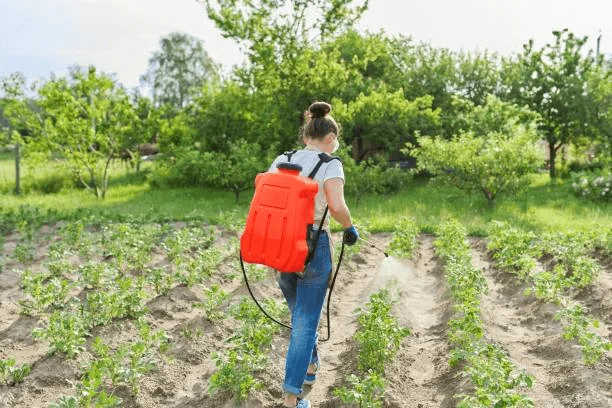
A backpack sprayer is essential in any home with a garden or a front lawn, and there’s a reason why they’re widely preferred over other types of sprayers, which we will explain below.
But before that, it’s important to state that our choice to stick with a backpack sprayer does not negate the efficacy of the other types of sprayers. However, if you don’t have a large plot of land, you don’t need a wheeled sprayer.
Recommended For Your Project
Advantages of Backpack Sprayers Over Other Sprayers
- Backpack sprayers are energy-saving, like VEVOR’s battery-powered sprayer, which lets you spray at the press of a button. The lock button also helps the sprayer go hours without the fatigue of moving the pump up and down to get liquid in the nozzle.
- Backpack sprayers help carry out precise solutions applications for optimal pest control, healthy crop development, and minimal environmental impact.
- These sprayers are also very portable, which means you can carry them about during usage, especially when mounted on your back. What could go wrong? Their portability means you can carry them anywhere in your car or cart for use and storage.
The VEVOR backpack sprayer comes with a movable cart that can help you move it around if you don’t want it on your back anymore.
VEVOR Backpack Sprayer Features
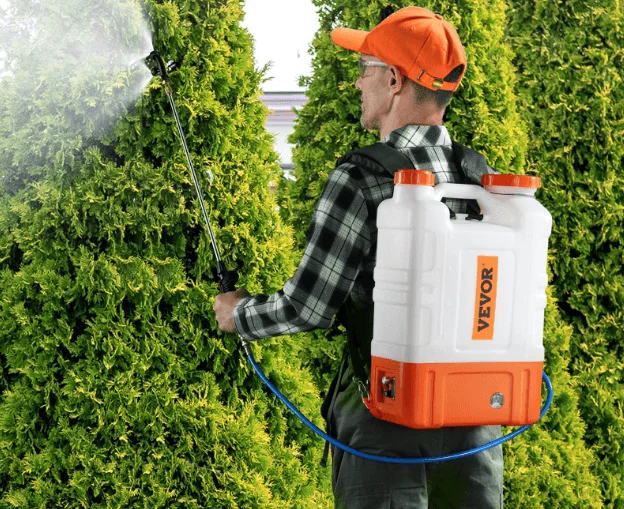
VEVOR backpack sprayer is a weed solution powerhouse packed with impressive features that give the user an impeccable experience and eliminate the dilemma of how to use a sprayer manually.
The sprayer boasts an ergonomic design. It features a battery-powered mechanism to relieve the stress of pumping manually, a functional handle with a locking trigger to aid continuous spraying with steady water usage, a see-through enlarged water inlet to help you monitor your water usage, and adjustable shoulder straps with a cushion added to keep your back soft and comfortable.
That’s not all. The VEVOR backpack sprayer saves you labor and time by ensuring you get 3-4 hours of use from one straight charge and an adjustable water pressure feature to meet your different spraying demands. You also get 6 nozzles and 2 wands with adjustable lengths for indoor or outdoor features.
Summary
Backpack sprayers are multifunctional, and knowing how to use a sprayer for weeds matters a lot. So, whether you need them to help control weeds, address pest infestations, water your garden, bathe your pets, or just help you ensure general cleaning of your space, these tools are very effective in getting the job done.
VEVOR backpack sprayers are efficient, easy to use, and fully packed with functional and unique features that make your spraying experience completely hassle-free. They have a battery pack that lasts up to 4 hours on single-use and sort out the issue of manual pumping and cushioned adjustable straps to keep you pain-free and protect your shoulders.
You also get to keep track of your sprayer’s capacity with a translucent filter screen. When you’re exhausted from mounting the sprayer on your back, a cart is there to help you move it around and keep your task going.


